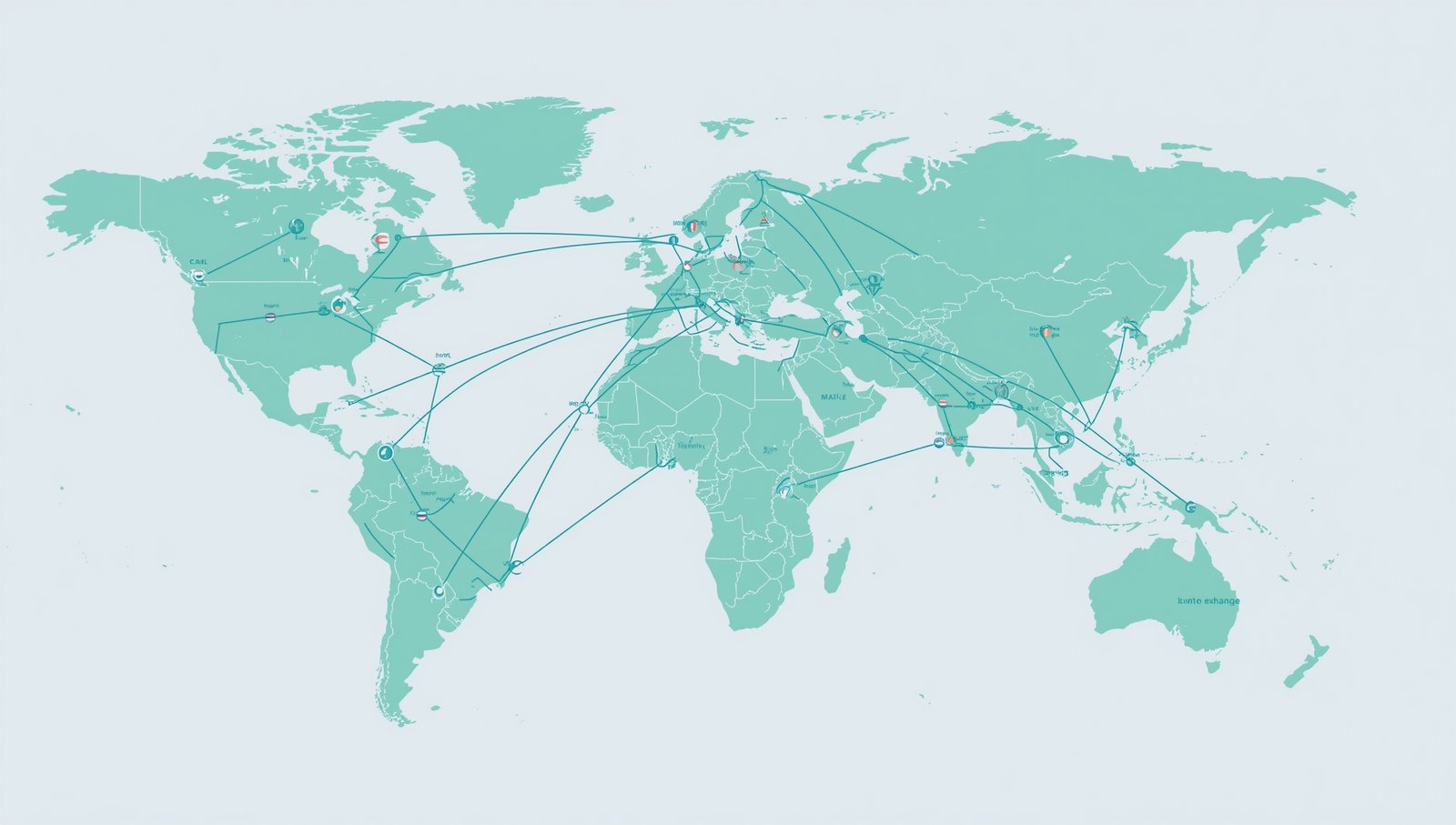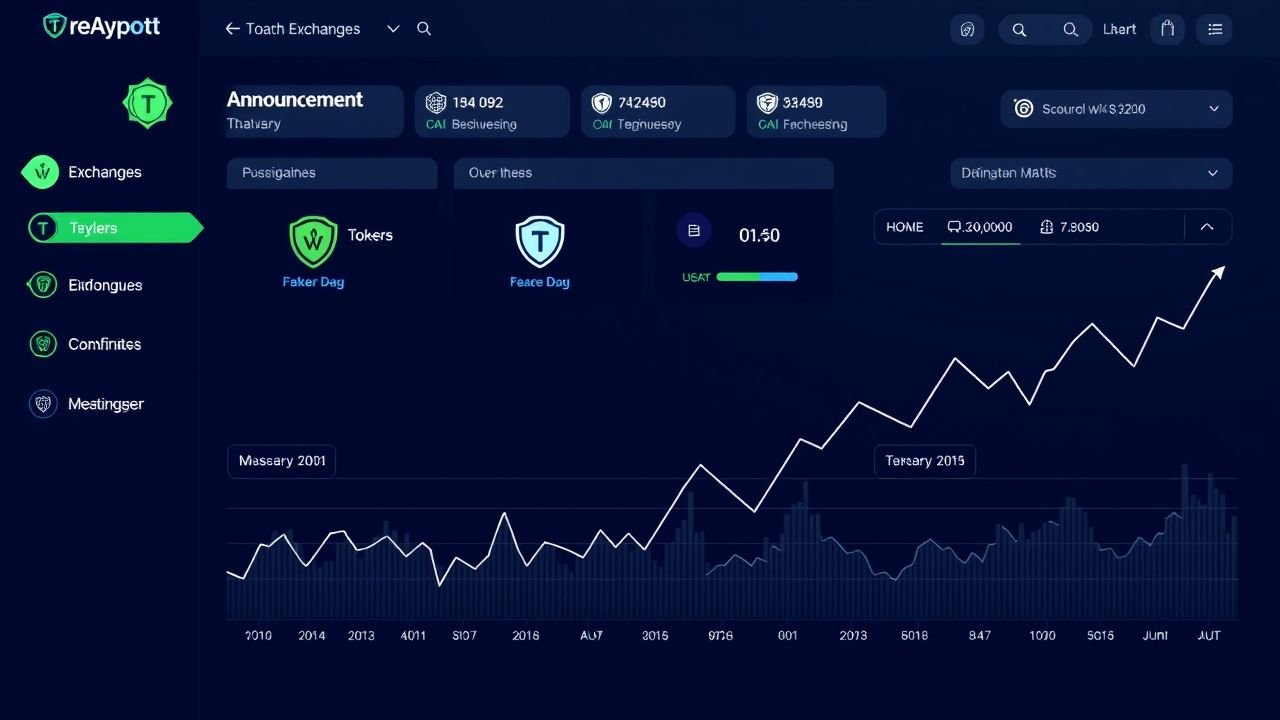The journey from traditional fiat money to digital cryptocurrencies has long been complicated by barriers that slow down or deter new users from entering the crypto space. Despite the explosive growth in crypto adoption worldwide, many potential investors still face challenges when trying to convert their local currencies into digital assets.
In 2025, leading cryptocurrency exchanges are making significant strides to revolutionize this process by launching new fiat onramps — seamless, secure, and regulated ways to convert fiat currency into cryptocurrencies. These innovations are pivotal for expanding crypto adoption beyond early enthusiasts and tech-savvy traders to the mass market.
This article delves into the latest fiat onramp announcements, the underlying technology and partnerships enabling them, the regulatory landscape shaping their implementation, and the resulting impact on users and the broader crypto economy. Whether you are a beginner looking to buy your first Bitcoin or a seasoned investor interested in market trends, understanding fiat onramp evolution is crucial.
1. Overview of Fiat Onramps and Their Importance
1.1 What Is a Fiat Onramp?
A fiat onramp is a gateway that allows users to exchange traditional government-issued currency (fiat) — such as USD, EUR, GBP, or local currencies — into cryptocurrencies like Bitcoin (BTC), Ethereum (ETH), or stablecoins. Essentially, it’s the entry point for new crypto investors who want to move funds from bank accounts, credit cards, or other payment methods into digital assets.
Onramps can be provided by exchanges, payment processors, or dedicated service providers that handle currency conversion, regulatory compliance, and security to make the process smooth and trustworthy.
1.2 Why Are Fiat Onramps Critical for Crypto Adoption?
The ease and accessibility of fiat-to-crypto conversions directly affect how many new users enter the crypto ecosystem. Without reliable onramps, users face technical, financial, or legal obstacles such as:
- Complex wallet setups and private key management
- Limited payment options or acceptance of only major currencies
- Slow processing times or high fees
- Regulatory uncertainty and compliance barriers
- Security risks related to identity theft or fraud
Improving fiat onramps lowers these barriers, enabling wider participation in the crypto economy — from buying NFTs to engaging in decentralized finance (DeFi) or simple peer-to-peer transactions.
2. Recent Fiat Onramp Innovations by Exchanges
2.1 Instant Bank Transfers and Real-Time Settlements
One of the biggest user pain points has been the delay in transferring funds from bank accounts into crypto wallets. Traditional bank transfers can take days, especially cross-border, causing frustration and missed market opportunities.
In 2025, many exchanges have integrated instant payment rails powered by technologies like:
- Faster Payments Service (FPS) in the UK
- SEPA Instant Credit Transfer in Europe
- FedNow and Zelle in the U.S.
- Regional real-time payment systems in Asia and Africa
These systems enable near-instantaneous settlement of fiat deposits, meaning users can buy crypto immediately upon funding their exchange accounts.
2.2 New Partnerships with Payment Gateways and Fintechs
Crypto exchanges are increasingly collaborating with global payment processors (like Visa, Mastercard, PayPal) and fintech startups to expand payment options. These partnerships enable:
- Buying crypto with credit/debit cards
- Mobile wallet integrations such as Apple Pay and Google Pay
- Support for QR code payments and localized mobile money services (e.g., M-Pesa in Africa)
These integrations make it easier for users in regions with less traditional banking infrastructure to access crypto.
2.3 Multi-Currency and Localized Payment Methods
Exchanges now support a growing list of fiat currencies beyond the usual USD, EUR, and GBP. For example:
- Indian Rupees (INR) via UPI payments
- Brazilian Real (BRL) via Pix system
- Nigerian Naira (NGN) via local bank transfers
- Southeast Asian currencies with local payment gateways
Localized options reduce friction by allowing users to pay in their preferred currency with familiar payment methods, avoiding currency conversion fees and complexity.
3. Regulatory and Compliance Aspects
3.1 Enhanced KYC/AML in Fiat Onboarding
With greater regulatory focus on anti-money laundering (AML) and know your customer (KYC) rules, exchanges are implementing sophisticated verification processes to comply globally. Features include:
- AI-powered identity verification using government IDs and biometric data
- Proof-of-address and source-of-funds checks
- Continuous monitoring for suspicious transactions
While these processes add steps to onboarding, they protect users and institutions from fraud and illicit activities.
3.2 Licensing and Jurisdictional Challenges
Operating fiat onramps requires licenses that vary by jurisdiction. Exchanges expanding their onramps often announce new regulatory approvals, such as:
- Payment institution licenses in the EU under PSD2
- Money transmitter licenses in various U.S. states
- Financial service provider licenses in Asia-Pacific countries
Achieving regulatory compliance increases trust and enables broader service availability but requires complex legal navigation.
4. User Experience Improvements
4.1 Mobile App Integration for Easy Fiat Deposits
With mobile devices dominating internet access, exchanges prioritize seamless fiat deposits via their apps. Features include:
- One-click fiat funding via saved payment methods
- In-app tutorials guiding new users
- Instant buy/sell options on mobile for swift market entry
Such improvements cater to on-the-go investors and reduce entry barriers.
4.2 Reduced Fees and Faster Transaction Speeds
Competition among exchanges has driven down fees for fiat deposits, sometimes offering fee-free promotions for specific payment methods.
Moreover, faster settlement times reduce opportunity costs, making crypto trading more attractive.
5. Market Impact
5.1 Increased Liquidity and Trading Volumes
Improved fiat onramps lead to higher deposit volumes, providing exchanges with greater liquidity to support trading. This benefits all users by reducing spreads and enabling larger trades.
5.2 Expansion of the Retail Investor Base
By simplifying fiat access, exchanges attract users from demographics previously excluded due to technical or financial barriers, such as:
- Younger, mobile-first generations
- Residents in emerging markets with limited banking infrastructure
- Institutional investors seeking reliable fiat funding methods
This demographic expansion fuels overall market growth.
6. Challenges and Risks
6.1 Fraud and Identity Theft Prevention
As fiat deposits rise, exchanges face increased risk from fraudulent activities. Sophisticated fraud prevention systems and user education campaigns are essential to minimize losses.
6.2 Volatility Risks During Fiat-to-Crypto Conversion
Price swings can occur between fiat deposit and crypto purchase, exposing users to slippage. Exchanges manage this with features like:
- Price locks for short periods
- Transparent fee and spread disclosures
Users should also be aware of market volatility when timing purchases.
Fiat onramps have emerged as the cornerstone for unlocking mass crypto adoption in 2025. Through technological innovation, strategic partnerships, and regulatory compliance, leading exchanges are creating fast, secure, and accessible gateways from fiat to crypto.
This evolution is not only driving higher liquidity and market participation but also paving the way for crypto to integrate more deeply with everyday financial life. As fiat onramps become smoother and more inclusive, millions more will find it easier than ever to join the crypto economy — fueling the next wave of digital financial innovation.
For investors, staying informed about these onramp developments is key to optimizing entry points and managing risks in a rapidly evolving market.






